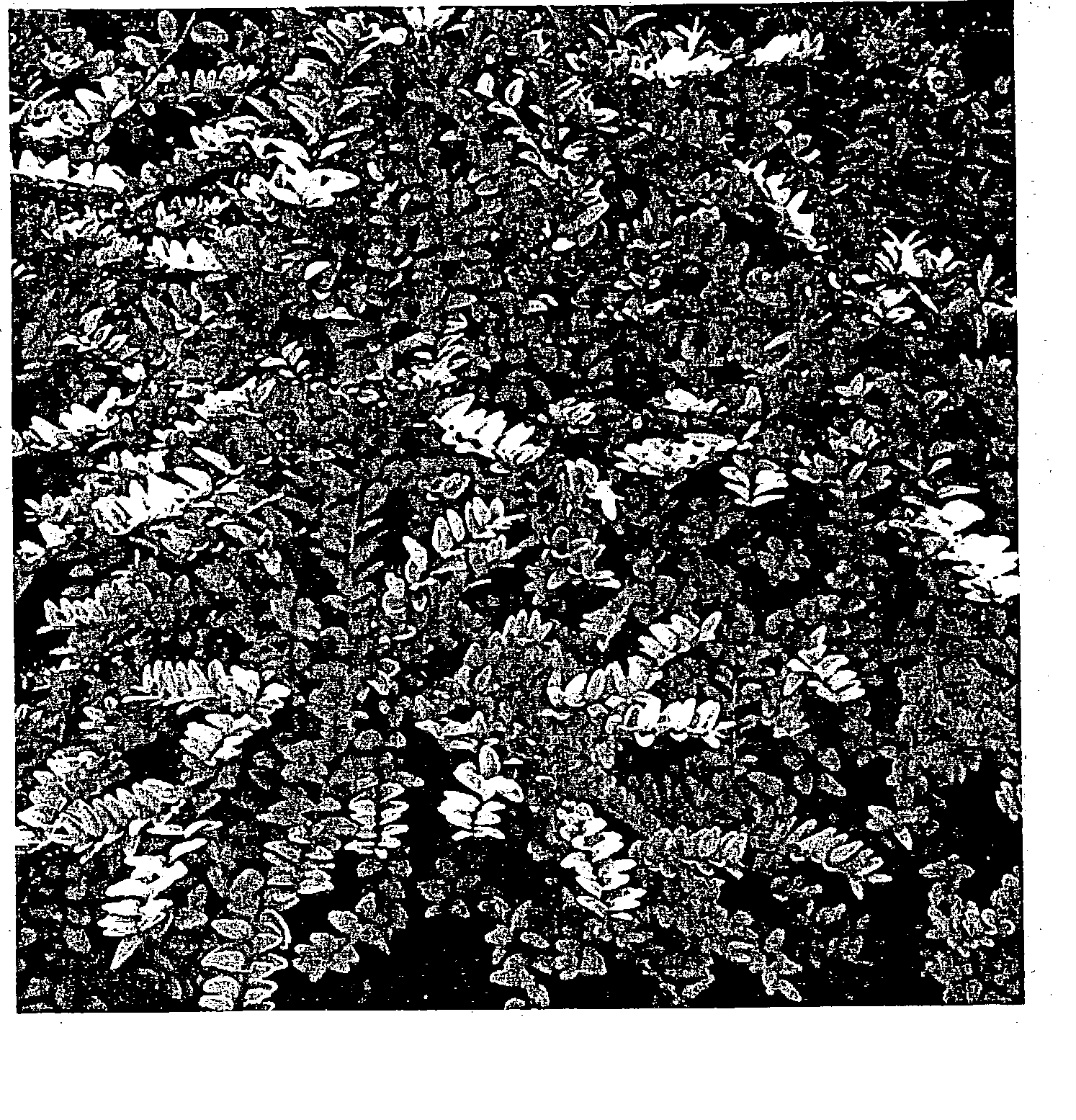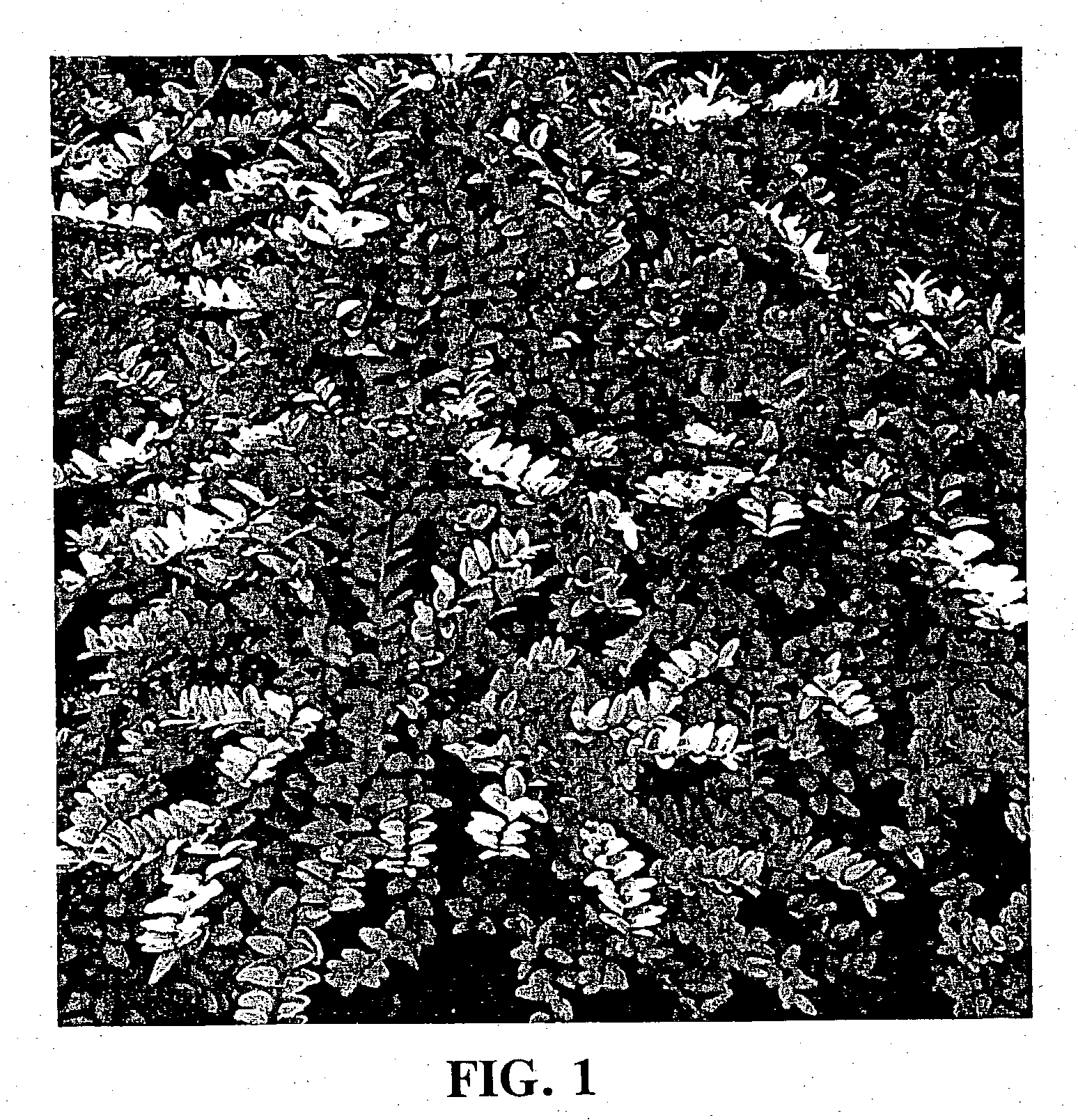Lonicera nitida plant named 'Briloni'
a technology of lonicera nitida and plant, which is applied in the field of lonicera nitida plant named briloni, can solve the problems of loss to mankind
- Summary
- Abstract
- Description
- Claims
- Application Information
AI Technical Summary
Benefits of technology
Problems solved by technology
Method used
Image
Examples
Embodiment Construction
[0016] The plants were approximately four years of age and were observed during the autumn when grown outdoors at Saint Barthlmy d'Anjou, Maine et Loire, France. Such plants had been asexually reproduced by the use of cuttings. Color terminology is with reference to the R.H.S. Colour Chart of The Royal Horticultural Society, London.
[0017] Origin: Spontaneous mutation of the `Maigrun cultivar (non-patented in the United States).
[0018] Plant:
[0019] Form.--Spreading.
[0020] Height.--Approximately 80 cm on average.
[0021] Width.--Approximately 100 cm on average.
[0022] Branches:
[0023] Configuration.--Substantially ovoid in cross-section.
[0024] Diameter.--Approximately 0.7 cm.
[0025] Color.--Young Stems: Greyed-Orange Group 177A and 177B. Adult Wood: Greyed-Orange Group 177A and 177B.
[0026] Foliage:
[0027] Length.--Approximately 1.4 cm on average.
[0028] Width.--Approximately 0.7 cm on average.
[0029] General appearance.--Dense.
[0030] Color.--New Foliage: Upper Surface: Commonly variegated betw...
PUM
 Login to View More
Login to View More Abstract
Description
Claims
Application Information
 Login to View More
Login to View More - R&D
- Intellectual Property
- Life Sciences
- Materials
- Tech Scout
- Unparalleled Data Quality
- Higher Quality Content
- 60% Fewer Hallucinations
Browse by: Latest US Patents, China's latest patents, Technical Efficacy Thesaurus, Application Domain, Technology Topic, Popular Technical Reports.
© 2025 PatSnap. All rights reserved.Legal|Privacy policy|Modern Slavery Act Transparency Statement|Sitemap|About US| Contact US: help@patsnap.com



